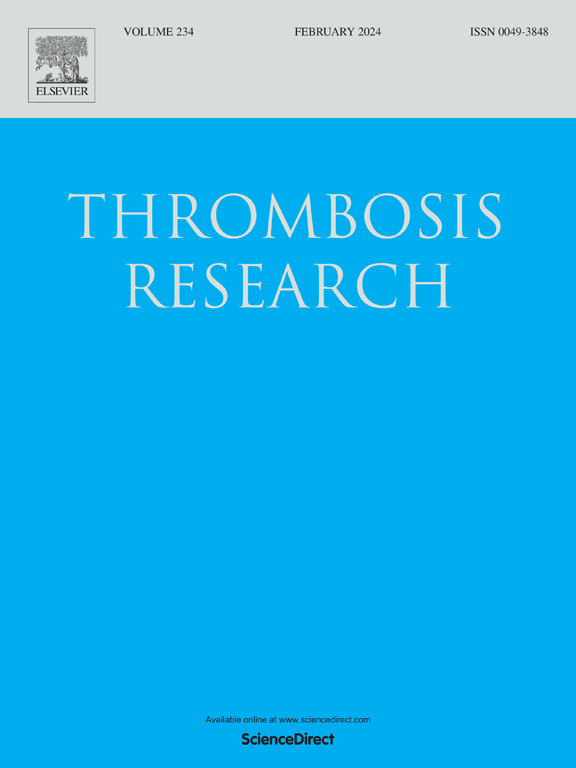FVIII half-life products: A real-world experience
IF 3.7
3区 医学
Q1 HEMATOLOGY
引用次数: 0
Abstract
Background
Haemophilia A is a genetic coagulation disorder requiring prophylactic Factor VIII (FVIII) treatment to prevent joint damage and enhance quality of life. The introduction of extended half-life (EHL) FVIII products represents a major advancement, addressing patient needs for reduced infusion frequency, improved efficacy, and enhanced safety.
Methods
This single-centre observational study examined the real-world use of FVIII products among 124 male patients treated at the Haemophilia Centre of Padua from January 2018 to December 2023. Data on patient characteristics, treatment regimens, and pharmacokinetic profiles were analyzed.
Results
Among the FVIII products used, Advate®, Elocta®, and Jivi® showed median half-lives of 11.25 [10.75–12.25], 16.50 [13.75–17.75], and 15.38 [13.38–18.63] hours, respectively. Esperoct® exhibited the longest half-life at 19.75 [16.00–24.50] hours, enabling reduced infusion frequency. EHL products showed significantly lower weekly infusion rates compared to standard half-life (SHL) products (1.4 [1.0–2.0] vs. 2.0 [2.0–3.0], p < 0.001), with comparable bleeding control among the different FVIII-EHL.
Conclusions
EHL FVIII products offer significant clinical benefits, reducing the burden of frequent infusions and improving adherence while maintaining effective bleeding control. Despite these advancements, comprehensive evaluations of cost, safety, and long-term outcomes are essential to optimize their integration into haemophilia care.
FVIII半衰期产品:真实世界的体验
血友病A是一种遗传性凝血疾病,需要预防性因子VIII (FVIII)治疗来预防关节损伤和提高生活质量。延长半衰期(EHL) FVIII产品的引入代表了一项重大进步,解决了患者对减少输注频率、改善疗效和增强安全性的需求。这项单中心观察性研究调查了2018年1月至2023年12月在帕多瓦血友病中心接受治疗的124名男性患者中FVIII产品的实际使用情况。分析了患者特征、治疗方案和药代动力学资料。结果使用的FVIII产品中,Advate®、Elocta®和Jivi®的中位半衰期分别为11.25[10.75-12.25]、16.50[13.75-17.75]和15.38[13.38-18.63]小时。Esperoct®的半衰期最长,为19.75[16.00-24.50]小时,可以减少输注频率。与标准半衰期(SHL)产品相比,EHL产品的周输注率显著降低(1.4 [1.0-2.0]vs. 2.0 [2.0 - 3.0]), p <;0.001),不同FVIII-EHL之间的出血控制相似。结论sehl FVIII产品具有显著的临床疗效,减轻了频繁输液的负担,提高了依从性,同时保持了有效的出血控制。尽管取得了这些进展,但对成本、安全性和长期结果的综合评估对于优化其与血友病护理的整合至关重要。
本文章由计算机程序翻译,如有差异,请以英文原文为准。
求助全文
约1分钟内获得全文
求助全文
来源期刊

Thrombosis research
医学-外周血管病
CiteScore
14.60
自引率
4.00%
发文量
364
审稿时长
31 days
期刊介绍:
Thrombosis Research is an international journal dedicated to the swift dissemination of new information on thrombosis, hemostasis, and vascular biology, aimed at advancing both science and clinical care. The journal publishes peer-reviewed original research, reviews, editorials, opinions, and critiques, covering both basic and clinical studies. Priority is given to research that promises novel approaches in the diagnosis, therapy, prognosis, and prevention of thrombotic and hemorrhagic diseases.
 求助内容:
求助内容: 应助结果提醒方式:
应助结果提醒方式:


